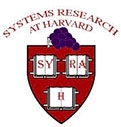Citation:
Date Presented:
June 2002Abstract:
The Direct Access File System (DAFS) is an emerging industrial standard for network-attached storage. DAFS takes advantage of new user-level network interface standards. This enables a user-level file system structure in which client-side functionality for remote data access resides in a library rather than in the kernel. This structure addresses longstanding performance problems stemming from weak integration of buffering layers in the network transport, kernel-based file systems and applications. The benefits of this architecture include lightweight, portable and asynchronous access to network storage and improved application control over data movement, caching and prefetching.
This paper explores the fundamental performance characteristics of a user-level file system structure based on DAFS. It presents experimental results from an open-source DAFS prototype and compares its performance to a kernel-based NFS implementation optimized for zero-copy data transfer. The results show that both systems can deliver file access throughput in excess of 100 MB/s, saturating network links with similar raw bandwidth. Lower client overhead in the DAFS configuration can improve application performance by up to 40% over optimized NFS when application processing and I/O demands are well-balanced.
